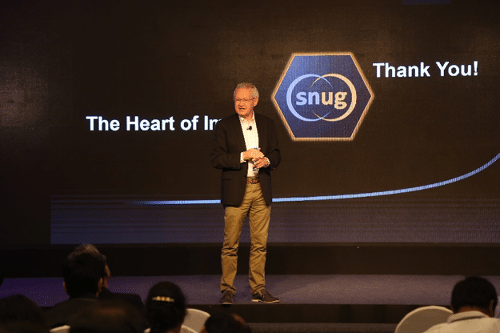Any system is made up of hundred of subsystems. When you investigate any subsystem, you find a complex architecture that again breaks into many sophisticated chips that are crucial and takes a lot of time to be designed and manufactured.
Synopsys has a design community for semiconductor design engineers called Synopsys User Group (SNUG) that was established in 1991 to provide users of Synopsys design tools, IP (Intellectual Property), and technology with an open forum in which they can exchange ideas, discuss problems, and explore solutions.

Synopsys hosted its 19th year of Synopsys user group (SNUG) India 2018 on 12th to 13th of July which featured around 70 user papers and presentations on design synthesis, low-power implementation and verification, test, mixed-signal verification, IP integration, emulation, virtual prototyping, and FPGA-based prototyping. The event is a gathering of semiconductor professionals for sharing best practices and methodologies in semiconductor design.
The keynote session by Dr. Aart de Geus, chairman and co-chief executive officer at Synopsys, discussed about the “At the Heart of Impact”, how the demand for computation power is changing virtually all industries from automotive to healthcare to financial services. He talked about the trends, opportunities, and emerging solutions in the new exciting landscape.
“All market segments are digitising themselves, and the semiconductor ecosystem is at the centre of making this happen. This transformation is changing and challenging the semiconductor industry as we evolve to a world of smart everything that is networked, mobile, and under increased pressure to become more secure. Synopsys is both humbled and privileged to be during this transformation.”, said Dr. Aart de Geus
He also briefed about how various technologies like Artificial intelligence (AI), Machine learning, big data and cybersecurity is impacting the design of semiconductor devices today. He also talked about the development of AI and machine learning is going to broaden the opportunities. Machine learning allows one to simulate more experiments from a fabrication point of view in a much smaller time. It can be used to simulate a situation and use the simulation to predict what’s going to come out.
With autonomous car trending to be the future, Dr. Aart addressed how to simulate such autonomous car even before it is built, which is a systemically complex solution with many layers but one of the layers is to just look at the electronics in the car.
Today, with all the processors like general CPU (central processing unit) already morphed into DSPs (digital Signal Processing), graphic processors and ultimately into AI processors, Dr. Aart talked about how vision processor is a fusion of multiple things and how Synopsys is working towards making it as a building block. A Vision processor has a CPU that can have up to four cores, each made up of a scalar CPU and a bit vector DSP. Around that is a convolution neural network that help to do several tasks, and the interpretation of the neural network learning data in a common implementation platform and with all the software that makes this possible.
With security being the need of the hour today, Dr. Aart explained how to protect a system and make it hack free. He mentioned the necessity is to build trust zones and have a secure subsystem that allows you to keep the data safe with systematic approach with both software and hardware.
The second keynote was by Pradeep Elamanchili, Vice President, global ASIC engineering, Western Digital. He spoke about the “Data-Centric World, Opportunities, and Insights”. He briefed about the evolution of big and fast data and technologies that will enable next generation of innovation in Machine Learning and Artificial Intelligence.
“Today, enterprises are seeing exponential increase in volume, variety and longevity of Big and Fast Data. Machine Learning and AI rely on this data to capture customers’ attention and thereby the market share. Western Digital is committed to working with our partners to create technologies and platforms that foster new discoveries through transformative value of data.”, said Pradeep Elamanchilli.
With the semiconductor industry and ecosystem accelerating towards digital transformation, designing better and safer systems with the intersection of both hardware and software is the key area that the design engineers should focus on.






